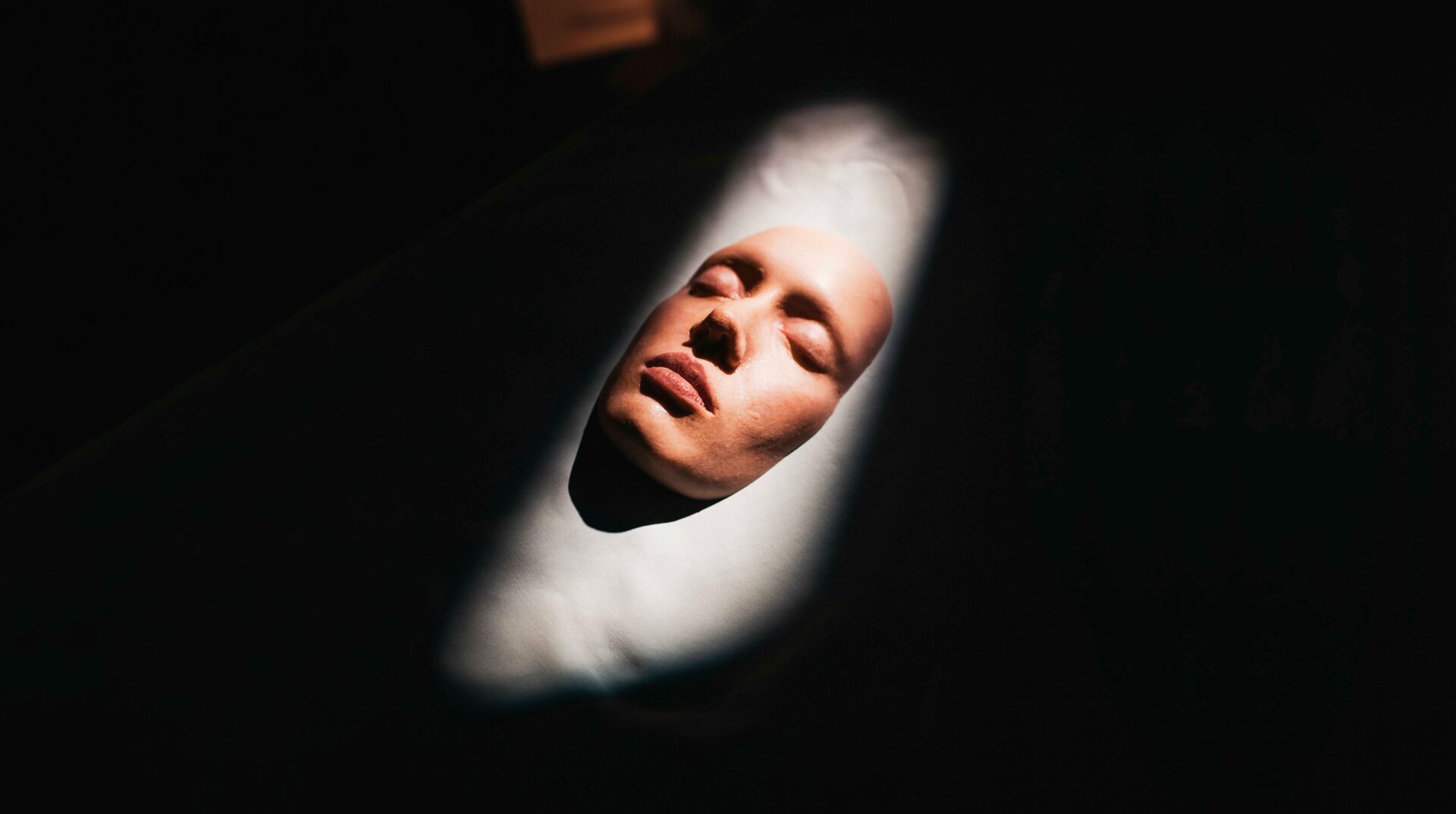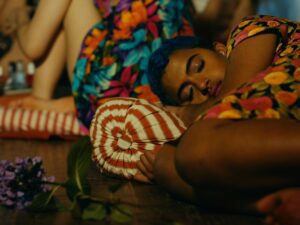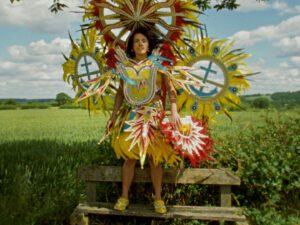Michelle Williams Gamaker is fast becoming one of the most vital voices in contemporary British art. Born in London in 1979, she has steadily carved a singular path as a moving-image artist whose practice interrogates race, representation and the residual power of cinema. With a doctorate in Fine Art from Goldsmiths and a background in Visual Anthropology, her work deftly merges critical theory with cinematic craft. She has exhibited widely at institutions such as South London Gallery, Bluecoat in Liverpool, and Dundee Contemporary Arts, where her recent trilogy Our Mountains Are Painted on Glass drew acclaim for its reanimation of marginalised screen presences and fictionalised acts of resistance.
Williams Gamaker’s practice is driven by an urgent political energy and a deep affection for the moving image. She unearths suppressed narratives within the canon of British and Hollywood film, rewriting them through an empathetic but incisive lens. Her layered storytelling bridges archive and fiction, challenging dominant histories while offering reparative alternatives. In 2024, she won the Best Experimental Film Award at the BAFTA-Qualifying Aesthetica Short Film Festival, a recognition that further solidified her place as a leading figure in British film art. Her award-winning film, Oberon (2023), commissioned by the BFI, examined the casting choices and racial erasures behind Powell and Pressburger’s The Red Shoes (1951), with a dazzling blend of historical reconstruction and speculative fiction.
Now, Williams Gamaker returns to Matt’s Gallery with Strange Evidence, an ambitious new project that expands her cinematic universe. Running from 14 May to 20 July 2025, this exhibition builds on her previous work to survey the extraordinary but troubled life of 1930s screen actress Merle Oberon. The gallery becomes both installation and production site, housing the evolving set of a new film. Part homage, part exorcism, Strange Evidence exposes the painful legacy of racial passing and self-erasure in the industry.
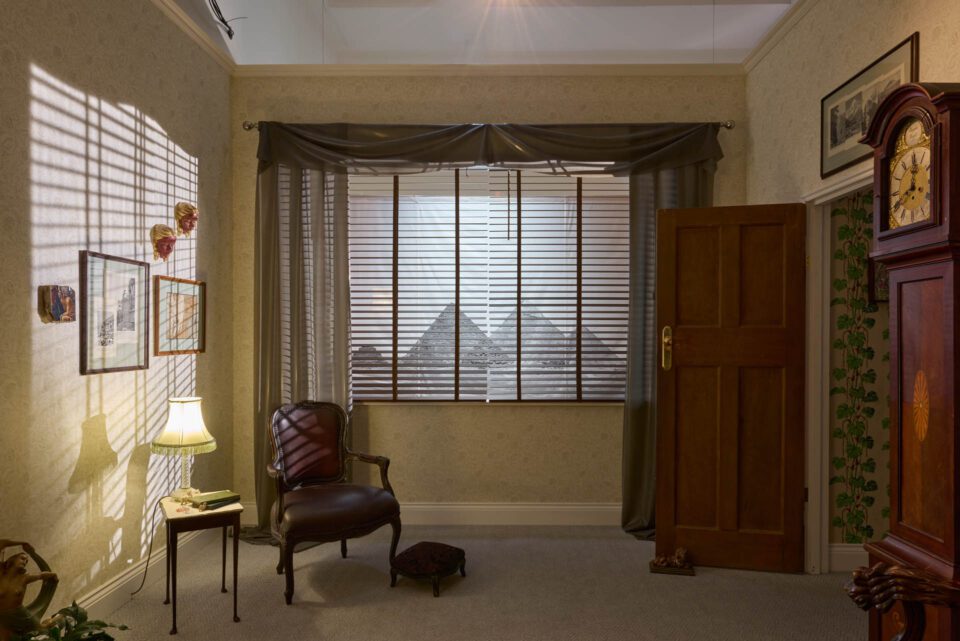
Oberon, born in India to a mixed heritage of Sri Lankan, Indian and British ancestry, became one of the most famous screen stars of her generation. Yet she spent her entire career concealing her identity, adopting a fabricated biography that claimed Tasmanian birth and British lineage. Her position as a leading lady came at a cost: a rigid public image maintained through extreme cosmetic procedures and strategic photographic control. These efforts, driven by the racial politics of 1930s Hollywood and British cinema, resulted in both physical harm and emotional estrangement from her origins.
Strange Evidence navigates this story with empathy and complexity. Early sequences already completed and shown in the gallery depict Oberon undergoing painful dermabrasion treatments – acts of bodily transformation rendered through the visual language of body horror. These unsettling images are not sensationalist but instead frame the violence as systemic, revealing the deep psychological and physical toll exacted by the industry.
The space itself operates as a hybrid installation and live set, with filming scheduled to take place between 11 and 17 June. During this time, scenes will be shot that imagine Oberon in therapy, offering her – through Williams Gamaker’s fictional lens – a space to process her trauma. Styled in stark Film Noir aesthetics, these scenes will be presented in black and white, drawing attention to the psychological fragmentation and suppressed interiority of a woman shaped by fame and exclusion.
This psychoanalytic thread runs throughout Williams Gamaker’s practice, allowing imagined protagonists to confront the forces that have historically silenced them. In giving voice to Oberon’s pain, the artist extends her ongoing inquiry into the politics of representation and the potential of fictional healing. The work forms the first part of her new series Fictional Healing and continues the Critical Affection trilogy, following The Bang Straws (2021) and Thieves (2023). Where her previous works focused on resistance and revenge, Strange Evidence turns inward, offering a quieter but no less powerful act of reclamation.
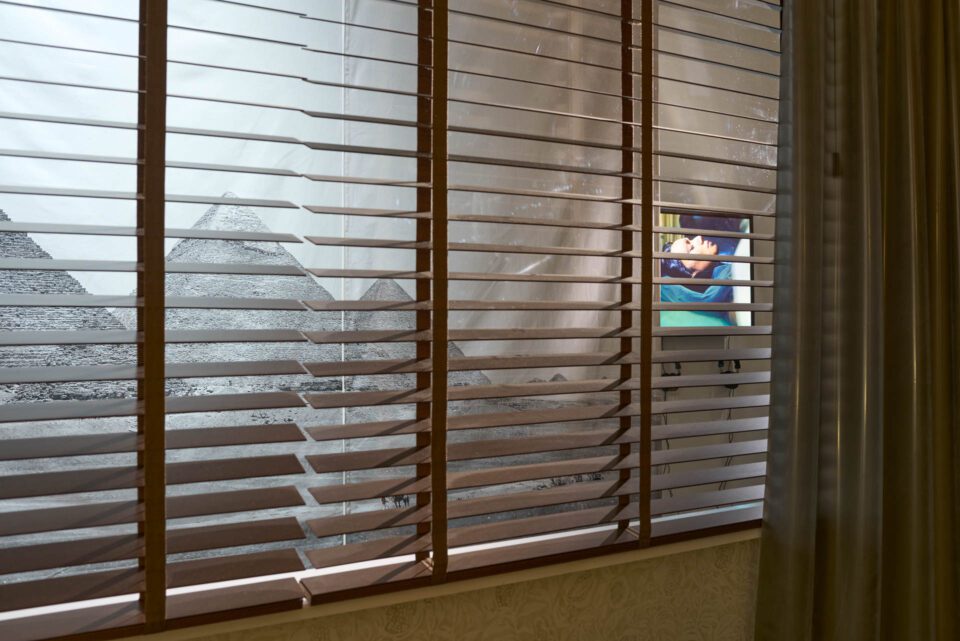
Williams Gamaker is not merely revisiting forgotten film histories. She is recasting them, elevating the marginalised, and crafting new mythologies that confront both past injustice and present inequality. Her films are rigorous, poetic, and politically acute – marked by their refusal to separate formal experimentation from social critique.
Cherie Federico, Director of Aesthetica, praised her 2024 win, stating: “Michelle’s work exemplifies the bold, radical storytelling we aim to spotlight at Aesthetica. Her ability to fuse experimental form with political urgency is unmatched. We are proud to support new voices, especially female artists who are transforming the visual culture landscape.”
That transformation is clearly underway. Strange Evidence not only continues Williams Gamaker’s exploration of cinematic history, but also furthers her commitment to revisionist narratives that make space for those historically denied complexity and presence. In this layered, tactile and emotionally intelligent installation, history is not merely replayed – it is rewritten. At once a critique and an act of care, Strange Evidence is a film and exhibition that challenges the viewer to look harder, listen deeper and rethink the stories we have long accepted as truth.
Strange Evidence runs 14 May – 20 July at Matt’s Gallery, London.
Words: Anna Müller
Image Credits:
1. Michelle Williams Gamaker, production still from Strange Evidence, 2025. Photo credit: Paulina Figueroa. Courtesy of the artist and Matt’s Gallery, London.
2-3. Michelle Williams Gamaker, Strange Evidence, 2025, exhibition view, Matt’s Gallery. Photograph by Jonathan Bassett.


